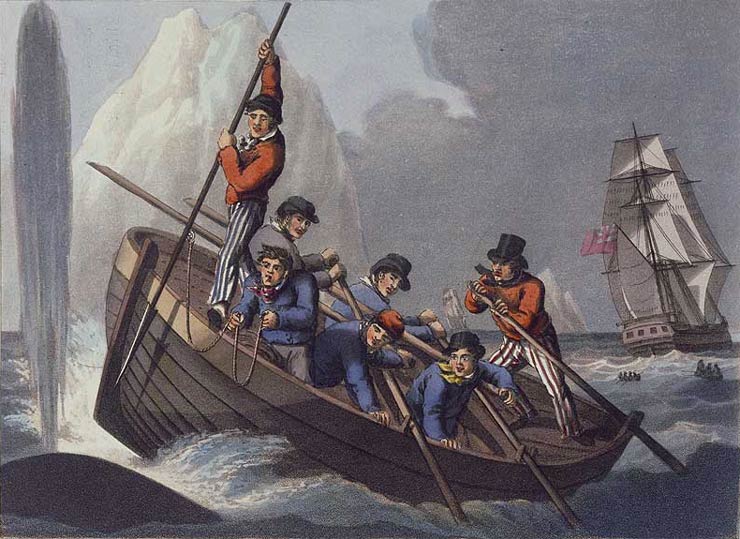 'A ship's boat attacking a whale', c1813
'A ship's boat attacking a whale', c1813
TLF ID R3041
This is a hand-coloured aquatint (a print made from an engraving on copper) showing a boat's crew from a British whaling ship about to harpoon a whale. Measuring 18 cm x 22.8 cm, the print appeared in a book entitled 'Foreign field sports, fisheries, sporting anecdotes ...'
